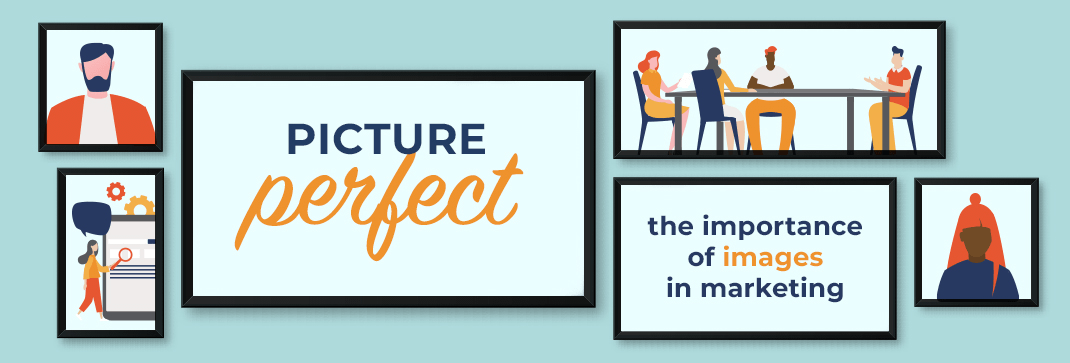
The saying “a picture is worth a thousand words” underestimates the comparative value of visuals and copy when considering these statistics:
- 65% of adults are visual learners.1
- 90% of the information processed by the brain is visual and it only takes 13 milliseconds for the human brain to process an image.2
- 95% of B2B buyers said they wanted shorter, highly visual content.3
So, how can event marketers use visuals to drive audience engagement and event attendance? Consider using images to:
Demonstrate Diversity and Inclusion. “People gravitate to familiarity,” says mdg Account Director Marissa Thompson. “Prospective attendees are more likely to identify with an event if they see other participants who look like them in attendance or on the speaker roster. Using inclusive images in marketing collateral is an obvious way to demonstrate a commitment to diversity and attract a diverse audience.”
The big caveat, of course – the images you choose must truly represent your event. Earlier this year, GenderAvenger called out Facebook’s F8 Refresh Conference for using stock images of women of color next to headings like “Keynote” and “Session Leaders” when in fact, only 39% of speakers were women and only 18% were women of color. Advertising a diverse event that isn’t diverse is disingenuous and potentially detrimental to your brand.
Calm Health and Safety Anxieties. It’s as important to think about what we don’t want to convey in our imagery as what we do. In the wake of the pandemic, many people have lingering fears of germs, mass gatherings and the potential for a COVID variant to take hold. We must be careful to avoid images of huge crowds, packed session rooms, people networking over buffet tables and anything else that will exacerbate health and safety concerns.
Set Realistic Expectations. Showing enormous crowds from a pre-COVID event might do more than bring up safety concerns – it might also set unrealistic expectations. If you don’t think your first event back will play to a full house, don’t use images that highlight a level of magnitude you likely won’t realize.
Trigger Urgency. Event marketers who have conducted post-show research have likely seen some variation of the following statistic: the primary reason participants attend an event is to see (or learn) what’s new. On the flip side, non-participants will often say something like, “I went last year and not that much has changed…” as a reason for not attending. As such, it’s imperative that we use images to highlight the timeliest trends, newest technologies, most buzz-worthy product launches and hottest speakers to convince prospects they need to attend this year or be prepared to suffer from a serious case of FOMO.
Encourage Social Sharing. Social media has created a desire for professionals to share what they learn – and the likelihood of sharing increases substantially when there’s an infographic, video, photograph or drawing that brings a concept to life. In fact, infographics are shared and “liked” on social media three times more than any other type of content.4
Appeal to Emotions. B2B marketers often neglect this truth: More often than not, people rely on emotions, rather than logic, to make decisions. Emotional responses to marketing actually influence a person’s intent and decision to buy more than the content of an ad or marketing material. Consider using images that evoke a feeling of community, a passion for a profession, consumers engaging with an industry’s end products, real attendees featured as “heroes”, etc., to appeal to the emotional side of your prospects’ brains.
1) Social Science Research Network; 2) Massachusetts Institute of Technology; 3) Demand Gen Report Content Preferences Survey; 4) HubSpot
A version of this article originally appeared in PCMA Convene.


